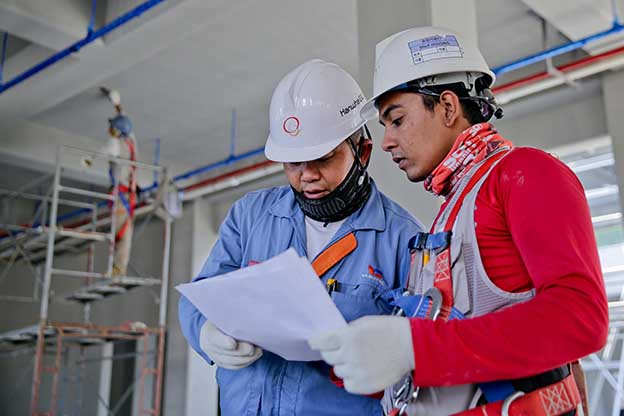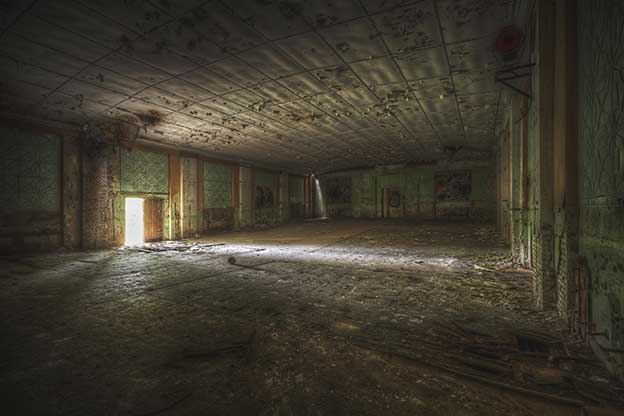Water Damage and Its Role in Sinking Foundation and Floor Framing Issues
Water damage is one of the most pervasive threats to structural integrity, especially when it comes to the foundation and floor framing of a building. When left unchecked, water infiltration can lead to sinking foundations and compromised floor framing, ultimately threatening a property’s safety, value, and longevity. Here’s a closer look at how water damage can impact foundations and floor framing, along with ways to address and prevent these issues.
How Water Damage Affects Foundations and Floor Framing
Multiple factors can cause water damage, such as rainwater, plumbing leaks, and groundwater seepage. These sources can cause moisture to build up in the building’s foundation, causing more issues to arise:
1.Soil Erosion and Foundation Settlement
Soil erosion can result from water that accumulates around a building’s foundation. The soil can no longer support the foundation when it becomes saturated and starts to erode. Eventually, this erosion can actually cause foundation settlement where portions of the foundation begin to sink. The occurrence may lead to the structure tilting, developing cracks, or experiencing uneven floors.
2.Hydrostatic Pressure and Cracks
Water buildup causes hydrostatic pressure which pushes against the foundation walls resulting in massive maintenance issues such as walls bowing, cracking, or even entirely collapsing. Therefore, property owners must address the problem promptly. Formed cracks lead to structural instability in the foundation as well as the floor above.
3.Expansive Soil Issues
Where the soil is clay-rich or expansive, the soil can absorb moisture and swell causing the foundation to rise. When the soil dries out a little, it shrinks up and the foundation settles back down again. In time, this repetitive swelling and shrinking cycle will generate foundation cracks and gaps which damage the foundation and floor framing.
4.Floor Framing Rot and Decay
Constant moisture can rot the floor framing material such as wood. Wood beams, joists, and subfloors can weaken and decay due to leaks or excessive humidity creating a situation where the floors will eventually start sagging and will not be able to hold any structural weight. In time, floor framing may become weakened and fail, particularly in areas of heavy footfall or even heavy furniture loads.
5.Mold and Mildew Growth
Mold and mildew thrive in damp environments. When water gets into a building’s foundation or floor framing, it can encourage mold to spread which further weakens wood framing materials. Mold and mildew not only weaken structural integrity but are also unhealthy for those exposed.
Signs of Water Damage and Sinking Foundation Issues
- Cracks in Foundation Walls or Floors – Horizontal, vertical, or stair-step cracks in foundation walls or floors are common indicators of water-related foundation issues.
- Uneven or Sagging Floors – If floors begin to slope or feel uneven, it could indicate water damage in the floor framing or foundation movement.
- Doors and Windows That Stick or Don’t Close Properly – Foundation movement can cause frames to warp, leading to alignment issues with doors and windows.
- Visible Water Stains or Mold – Stains, mold, or musty odors can signal ongoing water damage that could affect the structure’s integrity.
Preventing Water Damage to Foundation and Floor Framing
All of the issues above can cause critical problems to property foundation and floor framing. Property owners and investors need to prevent water damage to the foundation before the maintenance problems become excessive. Investors are encouraged to address professional property management companies to help them with the issue.
Here are some tips to help you prevent water damage to foundation and floor framing:
- Proper Grading and Drainage - Ensure that the ground around the building is graded to slope away from the foundation. This helps prevent water from pooling around the base of the building.
- Waterproofing and Sealants - Apply waterproof coatings to foundation walls to reduce water infiltration.
- Sump Pumps and French Drains - In areas prone to flooding or high groundwater, installing a sump pump or a French drain can help manage excess water and prevent it from reaching the foundation.
- Crawlspace and Basement Ventilation - Good ventilation in crawlspaces and basements can help control moisture levels, reducing the risk of rot in floor framing.
- Regular Inspections and Maintenance - Conduct routine inspections for signs of water damage, especially after heavy rain or snow.
Conclusion
Water damage is a significant threat to both foundations and floor framing. By recognizing the causes and signs of water damage, property owners and managers can take preventive actions to protect the structural integrity of their buildings. Investing in proper drainage systems, regular inspections, and prompt repairs can make all the difference in safeguarding property from the costly effects of water-related foundation and floor framing issues.
‹ Back








